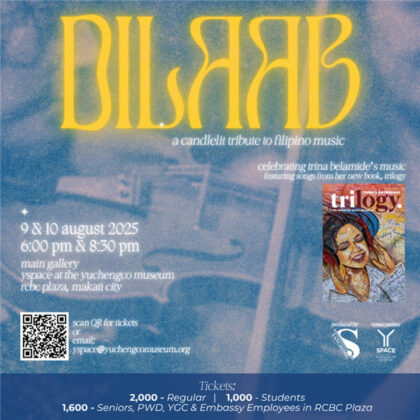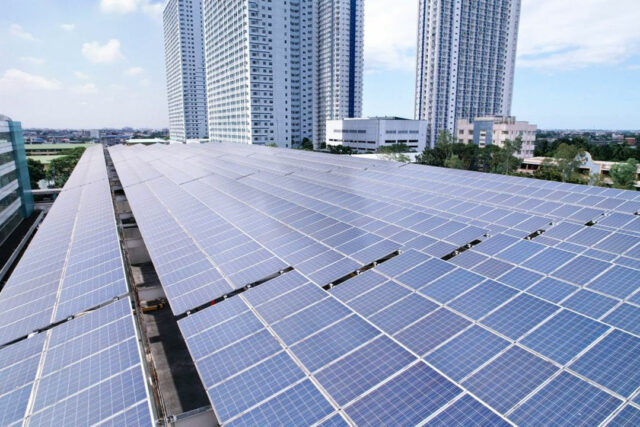In November 2024, we cited in our column Francis Fukuyama’s enduring insight: democracy doesn’t often fall with a dramatic crash, but erodes slowly through complacency, compromised institutions, and the quiet retreat of accountability.
That erosion of checks, of balances, and of public faith is no longer theoretical. In the Philippines today, it is playing out on two critical fronts. The first is domestic: a subtle normalization of impunity in governance, where accountability faces a bloating of obstacles. The second is external: the enduring challenge of defending our sovereignty against persistent incursions in the West Philippine Sea.
These twin crises, the enemy within and the enemy without, reflect a deeper struggle over justice, institutional integrity, and national dignity.
Few issues in recent memory have tested the architecture of public accountability more visibly than the impeachment of Vice-President Sara Duterte. The move by the House of Representatives to adopt and transmit six articles of impeachment was both extraordinary and historic. With a resounding majority, including votes from the Vice-President’s own political base in Mindanao, the lower chamber appeared to assert a clear principle: that no official, no matter how powerful, should be beyond scrutiny.
The allegations were serious: alleged misuse of confidential funds, unexplained wealth, bribery, even incitement to sedition. And yet, they remained allegations, charges that demanded fair, impartial, and expeditious adjudication.
But the Senate, constitutionally mandated to act “forthwith” on impeachment, stalled. Deliberations dragged. Timetables shifted. Political signals grew mixed. Eventually, the issue reached the Supreme Court, which declared the impeachment complaint unconstitutional, citing the “one-year bar rule” — a legal provision meant to prevent successive, potentially harassing impeachment attempts within a single year.
The July 25 ruling clarified that the complaint, as the fourth filed within a year, was inconsistent with the Constitution, and the Senate could not acquire jurisdiction over it. The Court was careful to note that it was not ruling on the merits of the allegations themselves, but only on the procedural validity of the complaint.
As a quick response the other day, Aug. 6, the Senate agreed to archive the impeachment articles. This decision is not dismissal, and therefore the Supreme Court could still act on several pending motions for reconsideration including those filed by the House of Representatives, 1Sambayan, Tindig Pilipinas, and TAMA NA. Some viewed this as a prudent step in deference to judicial authority. Others lamented it as a lost opportunity for the Senate to uphold its constitutional duty and allow the impeachment trial to unfold, transparently and fairly, in public view.
What cannot be denied is that the process ended not with resolution, but with retreat.
To be sure, due process must be respected. Vice-President Duterte has denied wrongdoing and, like all citizens, deserves the presumption of innocence. The Supreme Court’s role in safeguarding the Constitution must likewise be acknowledged. But it is equally important to reflect on what this episode reveals about the state of our institutions.
When the mechanisms of accountability are disrupted, whether by political inertia or procedural technicalities, the perception of impunity grows. And that perception, if left unchecked, becomes corrosive. Our people begin to believe that power shields, rather than obligates. That institutions protect the powerful more than they serve the public.
Such erosion is not always visible. But it is deeply felt.
Recent surveys confirm what we already sensed: 88% of Filipinos expect accountability from public officials. An overwhelming majority believe our leaders must focus on effective governance. These are not partisan demands. They are fundamental expectations in any functioning democracy.
When those expectations are unmet, democracy doesn’t explode. It quietly implodes.
No doubt, impeachment is not vengeance. It is a constitutional mechanism designed to protect the Republic. Archiving it without a trial, however legally sound the reasoning, risks sending the wrong signal: that public trust can be broken without consequence.
While institutional questions play out at home, a far more visible and alarming struggle continues to unfold beyond, and, yes, even within, our shores.
Nine years ago, in 2016, the Philippines won a decisive arbitral ruling at The Hague. That judgment invalidated China’s sweeping claims in the South China Sea including large swathes of our own exclusive economic zone (EEZ). The ruling was clear: under international law, there is no legal basis for China’s “nine-dash line.”
And yet, the harassment continues.
As we recently wrote for GlobalSource Partners, China’s Coast Guard ships regularly shadow, block, and even ram Philippine vessels. Our supply missions to the BRP Sierra Madre in Ayungin Shoal are intercepted or delayed. Filipino fishermen are driven away from traditional fishing grounds, their livelihoods jeopardized in waters the world rightly recognize as ours.
This brings us to a compelling new documentary, Food Delivery, which we watched at Rockwell on Aug. 1. It captures the everyday courage and humiliation of this struggle. It documents the Philippine military’s effort to deliver basic supplies — food and water — to soldiers stationed at Ayungin Shoal and to Filipino fishermen near Scarborough. These are not combat operations. These are acts of sustenance and sovereignty.
The footage is harrowing. We see unarmed boats pursued by far larger Chinese vessels. We hear stories of water cannons, starvation rations, and days spent evading Chinese blockades.
The film offers no overt argument. But it forces the viewer to ask: How can a sovereign nation, with a favorable international ruling, be prevented from feeding its own soldiers in its own maritime zone?
The answer, of course, is geopolitical reality. China’s rejection of the ruling has never wavered. Its strategy is to establish control not through legal victory, but through persistent physical presence. That presence in the form of flotillas, reclamation, and militarization seeks to normalize occupation by exhausting Filipino resistance.
In his time, British-American journalist Felix Greene (The Enemy, 1971) warned of the dangers of “satellization” when powerful nations extend influence not through war, but through economic and political encirclement. In today’s context, it is not the United States but China whose actions mirror that cautionary tale.
The deeper crisis is not just the violation of our waters, but the normalization of such violation.
We proudly mark Independence Day with grand speeches. We cite the 2016 arbitral victory in diplomatic forums. Yet on the sea itself, our sovereignty is tested daily not by declarations, but by confrontations.
The parallels between the institutional and the geopolitical crises are hard to miss.
In both the archiving of the impeachment case and the slow erosion of maritime control, we see a tendency to defer, to delay action, and to prioritize caution over courage. In both, we, Filipinos bear the cost: the public servant denied due resolution, the soldier left with dwindling rations, the fisherman returning with empty nets.
These are not just policy failures. They are moral tests.
When we treat accountability as optional, we erode the rule of law. When we accept foreign intimidation as inevitable, we diminish national dignity. In the process, we reduce what it means to be a democratic republic.
And the consequences are not abstract, they are real. A weakened rule of law affects investor confidence, dampens innovation and productivity, and undermines economic growth. Our failure to stand firm in defending our seas affects not only our security, but also our food security and our regional credibility. The compulsion is to protect, and not to gamble, the future of our next generation.
The President now faces a delicate balancing act: upholding our sovereign rights against Chinese encroachment while managing relationships with strategic allies. His principled stance in the West Philippine Sea deserves support, especially as it asserts our rights without needlessly provoking conflict. But that stance must be matched by consistency in rhetoric, in diplomacy, and in material support for our frontliners.
Democracy, like sovereignty, requires active defense. Both need institutions that do not waver when tested. They need citizens who remain engaged, and leaders who prioritize the Republic above themselves and their political commitments.
Ultimately, the question is not whether we support or oppose a particular leader. It is whether we still believe that law binds power. That the sea is not just water, but patrimony. That justice is not just a slogan, but a duty.
Our Republic is still struggling. But our struggles are no excuse for weakness. Struggles should toughen us up, and not enfeeble us. We need to strengthen our institutions so that when crises come, they do not collapse under the weight of convenience or coercion.
The impeachment case may be archived, but the question of accountability remains. The sea may be patrolled by foreign ships, but the duty to defend it continues.
As citizens, we say no to cynicism. We demand justice, we insist on sovereignty, and we remind our leaders that the strength of a nation is measured not by force, but by the resolve to do what is right even when it is difficult and a lonely cause.
Because when we stop fighting for accountability and sovereignty, we stop being a nation.
And that is the real existential crisis we must confront.
Diwa C. Guinigundo is the former deputy governor for the Monetary and Economics Sector, the Bangko Sentral ng Pilipinas (BSP). He served the BSP for 41 years. In 2001-2003, he was alternate executive director at the International Monetary Fund in Washington, DC. He is the senior pastor of the Fullness of Christ International Ministries in Mandaluyong.





















